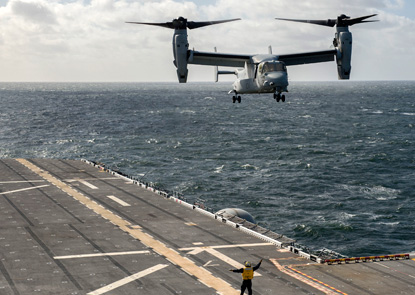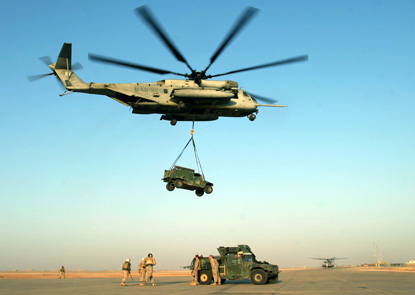Rotorcraft
Advancing the state of the art of rotorcraft dynamics and control.
Building on our vehicle dynamics, flight controls, and handling qualities expertise associated with fixed wing aircraft, Systems Technology has also made significant contributions in these areas for rotorcraft and tiltrotor aircraft.
Early rotocraft work
Early work in rotorcraft dynamics and handling qualities is best represented in the classic report A Compilation and Analysis of Helicopter Handling Qualities Data (NASA-CR-3144), which remains an important resource for rotorcraft research. Working with the Army Aeroflightdynamics Directorate, NASA Ames, NRC Canada, and others, Systems Technology played a significant role in the development of the ADS-33 Aeronautical Design Standard, Handling Qualities Requirements for Military Rotorcraft. This first of its kind mission-oriented specification introduced and/or promoted important concepts such as mission task elements, visual cue ratings, response types, and requirements for different levels of pilot aggressiveness.
Honored by American Helicopter Society
In a joint program with Sikorsky conducted for the US Navy, Systems Technology was instrumental in the development of a high order linear dynamic model of the CH-53E including structural and rotor modes. Ultimately, the models were validated in flight using frequency sweep inputs. The work was honored by the American Helicopter Society with the Grover E. Bell Award for its “outstanding contribution to helicopter development, research experimentation, advancing the state of the art modeling and testing of helicopter dynamics and structural bending modes.”
Rotocraft piloted simulations
Systems Technology has been involved with numerous rotorcraft piloted simulations programs many of them conducted using the NASA Ames Vertical Motion Simulator, which is uniquely well suited for rotorcraft low speed and hover maneuvering. Example programs have investigated simulator motion system fidelity requirements for handling qualities, flight control system response types for degraded visual environments, and the impact of added rotorcraft dynamics such as slung loads. The latter program was instrumental in exploring the use of wavelet scalograms to characterize rotorcraft pilot-vehicle system performance and was used to develop the new Power Frequency metric.
V/STOL aircraft
In addition to work with rotorcraft, Systems technology has worked extensively with the dynamics and control of Vertical and Short Takeoff and Landing (V/STOL) aircraft. This has included studies of V/STOL handling qualities, STOL flight directors, STOL transport flight path control, and fixed wing V/STOL field-of-view studies.
Range of engineering services
Systems Technology is available for contract work and government sponsored work on rotorcraft flight control development, both manned and unmanned, model validation, piloted simulation, and flight test work. Our past experience includes work with the UH-60, CH-53, XV-15, V-22, and many others.
A range of rotorcraft challenges have been addressed from the complex dynamic interface associated with shipboard operations to rotorcraft with slung load modeling.

